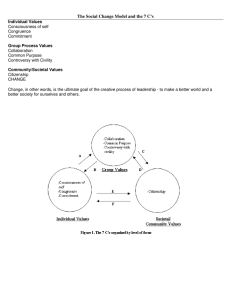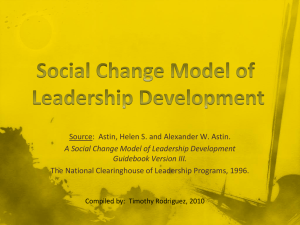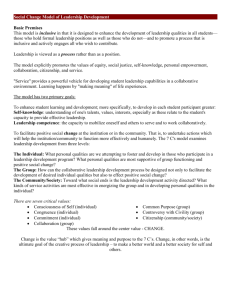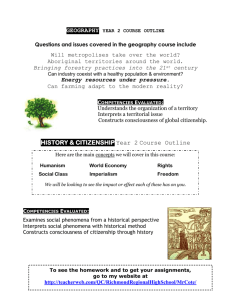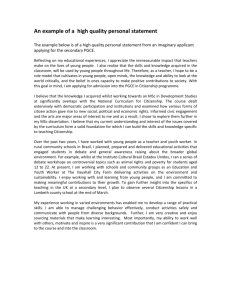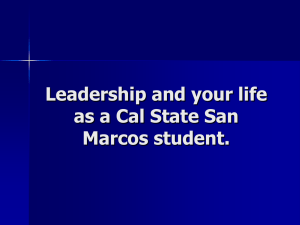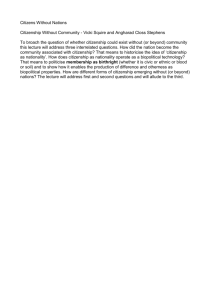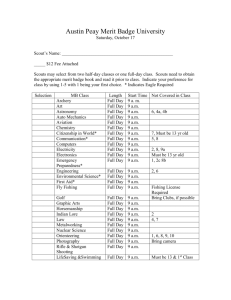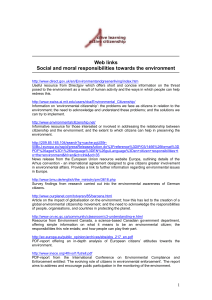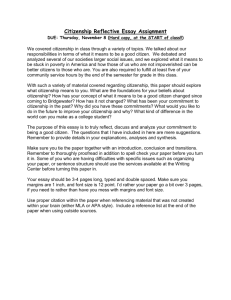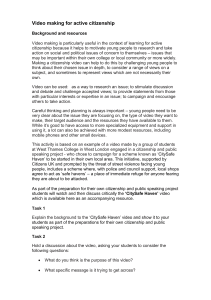Community Leadership * Leading for Social Change
advertisement
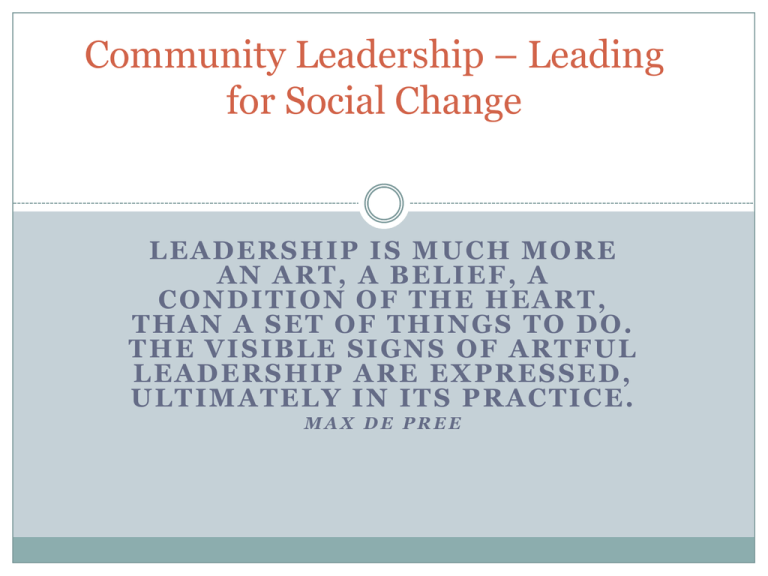
Community Leadership – Leading for Social Change LEADERSHIP IS MUCH MORE AN ART, A BELIEF, A CONDITION OF THE HEART, THAN A SET OF THINGS TO DO. THE VISIBLE SIGNS OF ARTFUL LEADERSHIP ARE EXPRESSED, ULTIMATELY IN ITS PRACTICE. MAX DE PREE Who Are They? The Social Change Model for Leadership Development Leadership is ultimately about change and effective leaders are those who are able to effect positive change on behalf of others and society. Change is the ultimate goal of the creative process of leadership – to make a better world and a better society for self and others. Social Change Model 7 Competencies Individual Values Consciousness of Self - Self Awareness (Values, Experiences) Congruence – Acting consistently with one’s values. Commitment – Committed in time and talent for sustained effort. Group Values Common Purpose – Group’s shared value(s) or goal(s) Collaboration – Using diverse group talents to work toward common goal. Community Values Controversy with Civility – Avoiding stalemate and groupthink. Citizenship – Working together Social Change Individual Values Consciousness of Self Congruence Commitment • My Card Activity, DISC • Aligning Values with Actions • Passions, what breaks your heart? Commitment What breaks your If you could make ONE positive change in the world, what would it be? What would you do? Group Values Collaboration – DISC Controversy with Civility – Emotional Intelligence Common Purpose – Social Change in Action Citizenship “Humankind has not woven the web of life. We are but one thread within it. Whatever we do to the web, we do to ourselves. All things are bound together, all things connect.” Chief Seattle What does “Citizenship” mean to you? What does good citizenship look like? How is Global Citizenship different? What does that look like? United States Case Study Inner Cities Falling Apart High concentrated crime rates Low high school graduation rates for inner city youth Higher unemployment rates Increased number of people living below the poverty line Less homeowners More abandoned properties More gangs Burned and Burned Again? Negatives of Abandoned Property Dangerous to curious Youth and Adults Attracts derelicts Bodies found Drug users infiltrate Decreases property value of occupied homes Eye Sore Action in Practice You are a: Native Local Resident Employee at the Gantt Center City Commissioner A College Student Renting in the Community 4 Groups Ah How Pretty! Action in Practice What’s the Issue? What can you do to address it? What do you need? Who do you need? What power do you have? How might you affect public policy on this issue? Where in the policy life cycle might you make change? Social Change Challenge Identify a social issue in your community. Create a presentation addressing the following questions: 1. What are the complexities of your issue? What is the web of circumstances your issue is connected to? 2. Who are the stakeholders of this issue and how will you involve them in your efforts? 3. What kind of power do you have? 4. What is your vision for addressing this community issue? What is the purpose of your work? 5. What are the values of your group? 6. What is your plan and the steps involved for achieving the plan? 7. How will you measure your success in addressing the issue?
